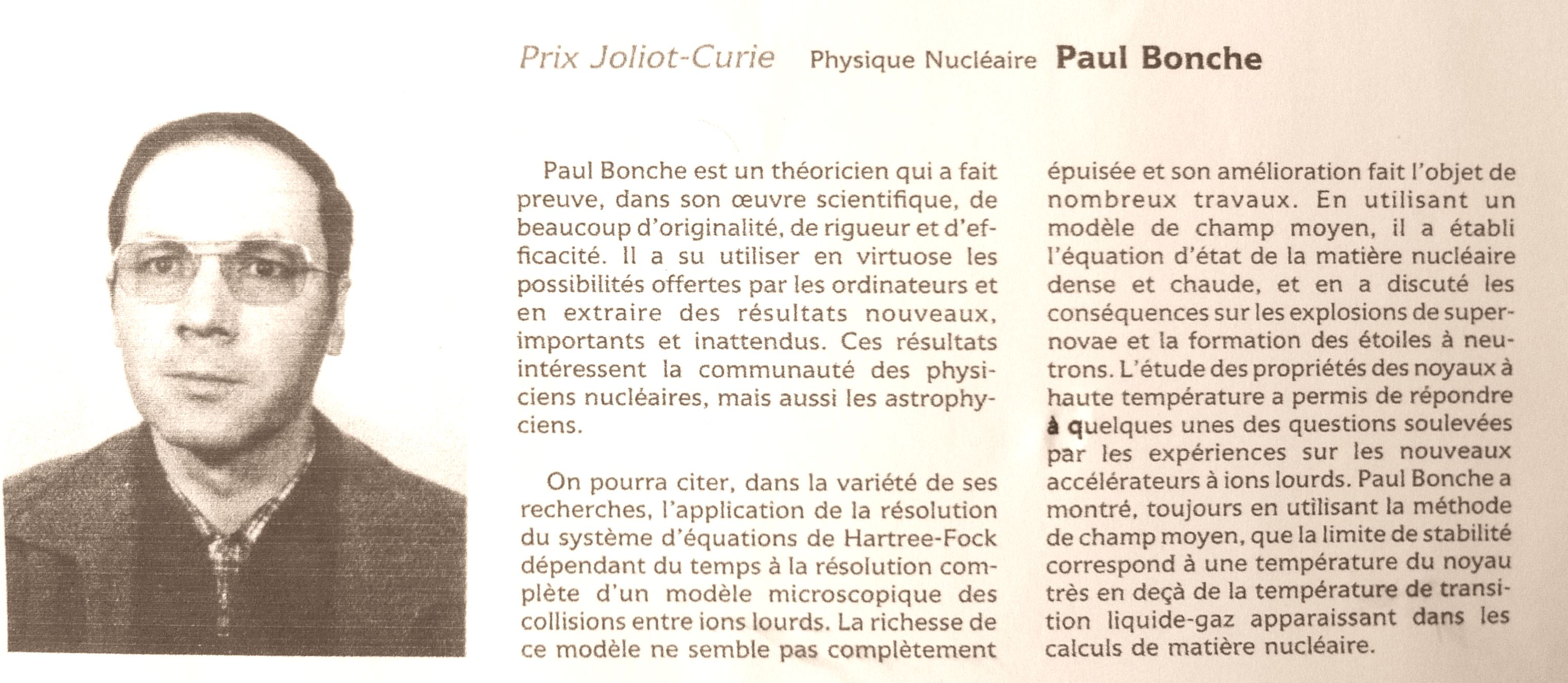Paul BONCHE
MBPT, EFT, EDF
Le Larsim et l'ESNT Projet nucleAI Post-doctorants-visiteurs Visiteurs Publications Post-doc Call 2021 Informations pratiques - Practical informationPaul BONCHE
Amongst the many topics he was interested in, here is a selection of the works he developed:
► Hartree-Fock Bogogliubov (HFB) methods with effective interactions, well adapted to the treatment of the nuclear structure problems of finite nuclei, in particular for exotic weakly-bound nuclei; applications to the phenomena of shape coexistence, super-deformation;
description of nuclear rotations and of the large amplitude collective correlations;
► Formalism and techniques for Time Dependent Hartree Fock (TDHF) calculations, which can be applied to nuclear reactions;
► Self-consistent mean-field methods;
► Developments of new Skyrme interactions.
|
Paul Bonche was also involved in the understanding of the problems related to the nuclear power and energy production, and he was an active member (chief-editor) of the CESEN group (Cercle d’Etudes Sur l’Energie Nucléaire), established at Saclay in the 90ies, and composed by volunteer physicists willing to examine the questions of nuclear energy.
Reports of the works made by the group can be found in the book published by EDP Sciences in 2002. "Le nucléaire expliqué par des physiciens "
Web site: http://iramis.cea.fr/spec/Nuclear.pdf |





